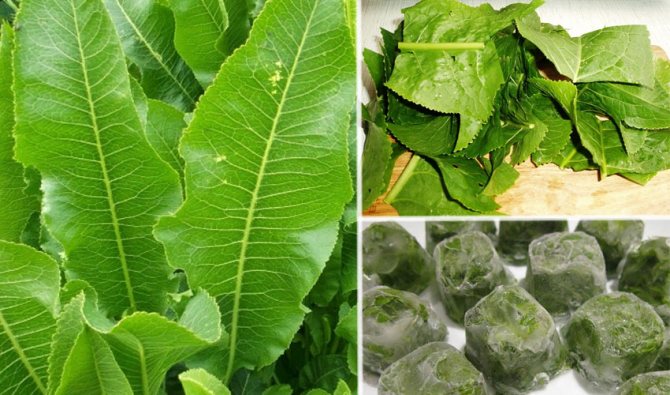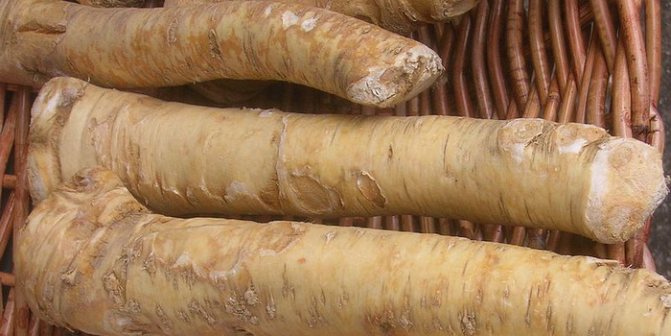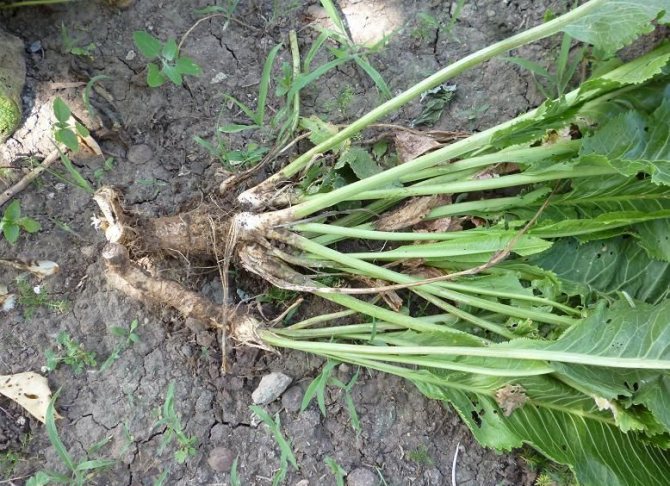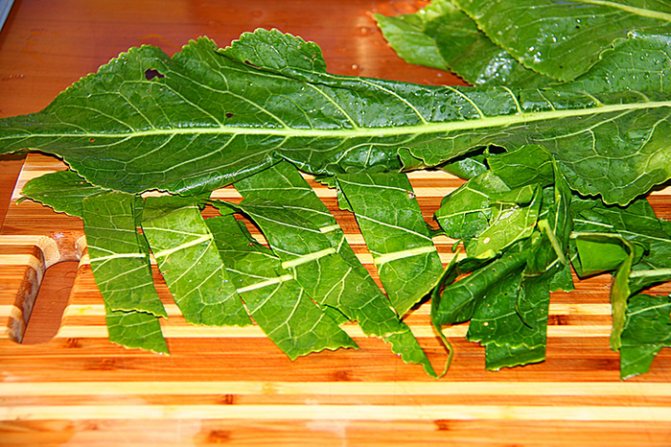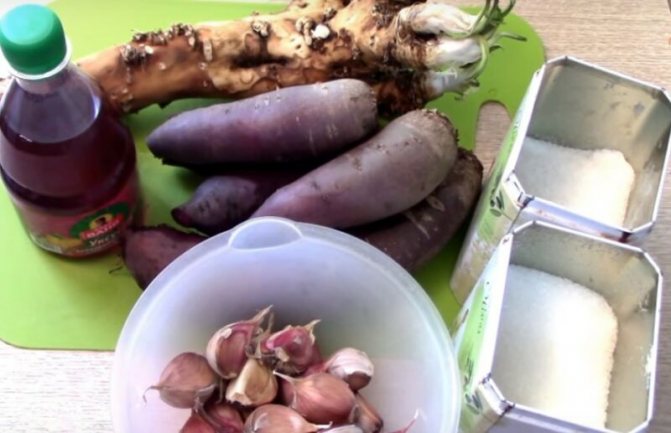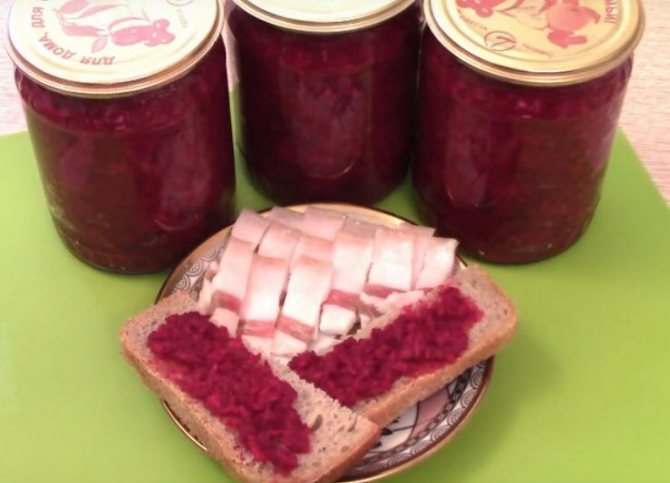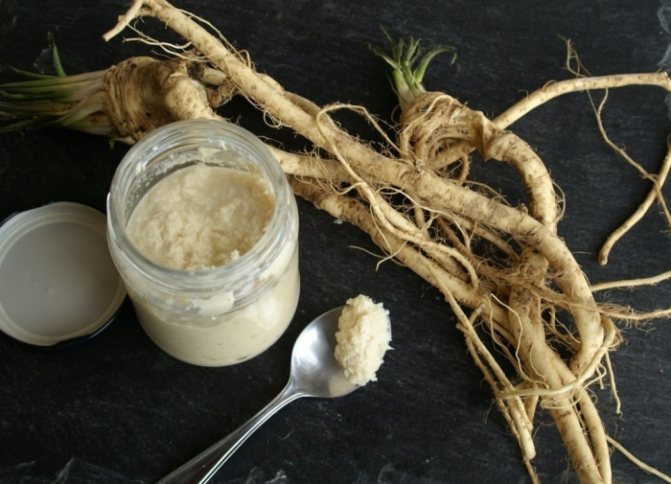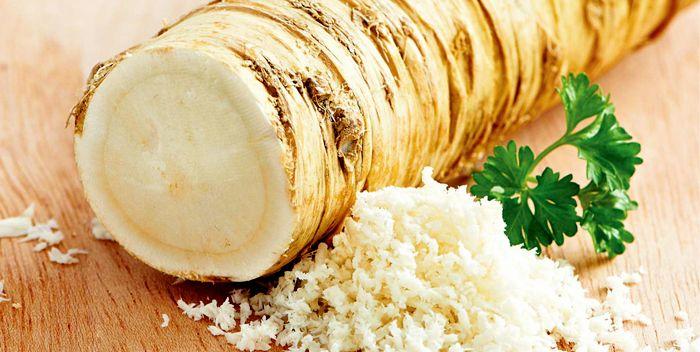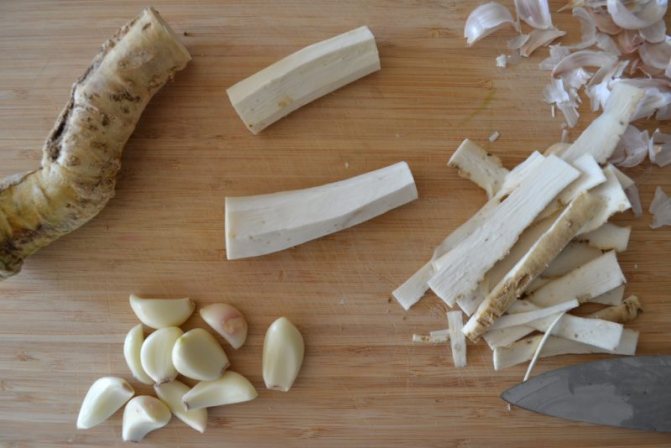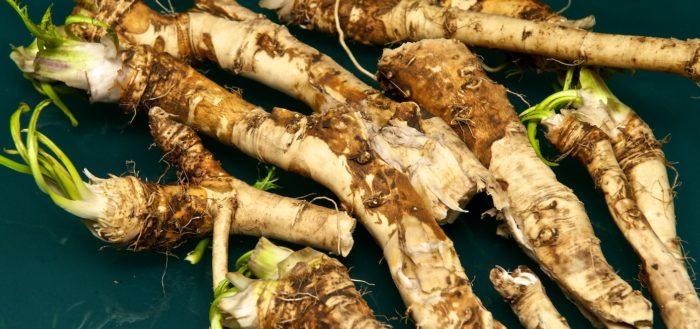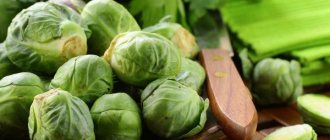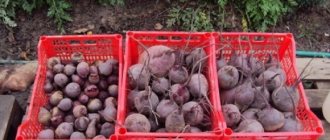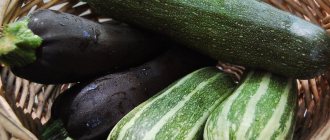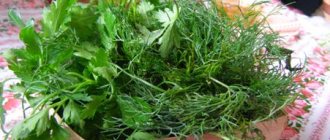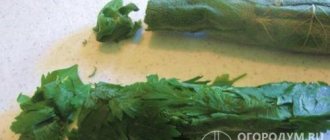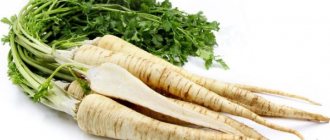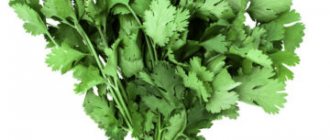In growing, horseradish is unpretentious and with minimal effort it is possible to have a supply of these aromatic roots, which are most often used to prepare a piquant seasoning. And so that the vegetable does not lose its basic properties until spring, it must be properly prepared. And then we will tell you how to store horseradish fresh, frozen and pickled.

Storing horseradish roots in a private house
For this, a cool basement or pantry is perfect. The temperature should not exceed +5 C °. Optimally 0… + 2 С °. Humidity 85-90%. There are three storage options.
In the river sand. This requires clean river sand. Not the smallest, since the roots in this one will rot very quickly. The sand is sieved and dried. Sand is poured into wooden boxes with a layer of about 8 cm. Roots are laid out on it, keeping a small distance between them. The main thing is that there is no contact. Top up with soil 3-4 cm and you can lay the next layer again. In a damp cellar, the sand is left dry. If the air in the room is dry, then once a week the boxes are sprayed with water. This will keep the horseradish fresh until spring. Instead of sand, you can take peat. Its antiseptic properties will prevent bacteria from growing.
Attention! The roots are not washed or cleaned, only the tops are cut off and the earth is shaken off. ... In limbo
The roots are tied in bundles of several pieces. Suspended from the ceiling so that there is no contact with other objects. Humidity plays an important role in this method. Damp air will promote decay, while dry air will quickly wither. Subject to the storage conditions, horseradish is able to "live" until winter and longer.
In limbo. The roots are tied in bundles of several pieces. Suspended from the ceiling so that there is no contact with other objects. Humidity plays an important role in this method. Damp air will promote decay, while dry air will quickly wither. Subject to the storage conditions, horseradish is able to "live" until winter and longer.
Horseradish can be used to make a powder that will be stored for a long time.
In tight plastic bags. The roots are washed, dried and put in bags, inflating with air. Tied tightly and left until spring.
In the cellar or basement
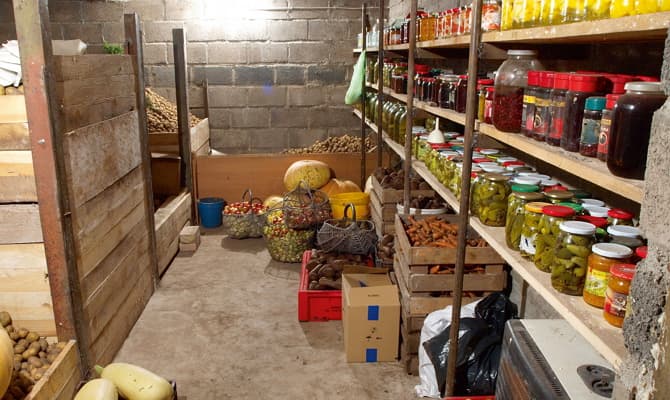

Before you lay the horseradish roots for storage in the basement, you need to take time to prepare the room itself by doing a general cleaning in it.
For the rapid destruction of the larvae of harmful insects, mold spores and fungi, you can fumigate the cellar with a sulfur stick, be sure to remove all products from it before that. At the same time, it should be remembered that a storage located at some distance from living rooms can undergo such processing.
Sulfur combustion in a cellar or basement is performed with a tightly closed door (at the rate of 1 kg of sulfur for each cubic meter of area). After fumigation, the room is well ventilated. It is allowed to lower vegetables into it only after 14 days.
It is in the underground or in the basement that horseradish will stay fresh for the longest time. The roots intended for long-term storage should be thick, juicy and even, free from rot spots and any damage.
Before laying them for storage, the leaves are very carefully cut off from them, trying not to touch the tops. Carefully shaking off the remnants of the soil from the roots, they are wiped along the entire length with a cloth made of dense matter, freeing them from the thinnest roots.
There are several ways to save horseradish in the basement:
In boxes
The processed horseradish roots are placed in a wooden box with blank walls, on the bottom of which there is an 8-centimeter layer of coarse and wet river sand.
It is better to refuse the use of fine sand, since it, like a sponge, will absorb excess moisture, provoking rotting of the roots stored in it. A few days before laying the roots, the sand must be sieved, removing large stones from it and be sure to dry it.
When laying the roots, you need to make sure that they do not touch each other (the optimal distance between adjacent roots is 3-5 cm).
Having laid the first row, they cover it with a 4-centimeter layer of sand and proceed to laying the next one. All remaining layers are placed in the box in the same way.
If desired, sand can be replaced with peat, the antiseptic properties of which can prevent the growth of pathogenic bacteria and prevent root rot.
Experienced vegetable growers often store horseradish along with carrots, placing it on the bottom of the box, and carrots on top. This neighborhood prevents root crops from rotting and losing moisture.
The stored horseradish roots should be inspected regularly. Rotten roots are subject to immediate destruction, and healthy ones are treated with a solution of an antifungal drug, after which they are sprinkled with fresh sand.
The optimum storage temperature for horseradish is from 0 to +5 degrees, the humidity level is up to 90%. The store must be ventilated periodically. Under these conditions, horseradish is able to last until the next harvest.
If there is a too dry room, as well as if there are obvious signs of drying out of the roots, the substrate in the box should be moistened with a spray bottle at least once a month.
In dense polyethylene bags
Thoroughly washed and dried roots are placed in bags, which are then inflated, filling with air. Hermetically sealed bags can keep root vegetables fresh for up to 5 months.
In buckets
Having lowered buckets filled with wet sand into the basement, horseradish roots are inserted vertically and at some distance from each other. This method can be used to store only a small amount of root vegetables.
In bunches
Having tied the roots in small bunches, place them under the ceiling, making sure that they do not touch other objects. The main disadvantage of this method is its dependence on the level of humidity in the environment.
In too damp air, root crops can rot, and in dry air, they wither. In a room with optimal humidity, horseradish can last until winter.
How to cook horseradish according to the Gorloder folk recipe


Chopped horseradish gives a special pungency to vegetable cold appetizer from tomatoes, which does not need heat treatment for storage, which is valuable in preserving natural vitamins and its mineral salts.


Ingredients:
- ripe fleshy tomatoes - 6-10 parts;
- fresh garlic - 1 part;
- fresh horseradish - 1/4 part;
- table salt - a little stronger than to taste.
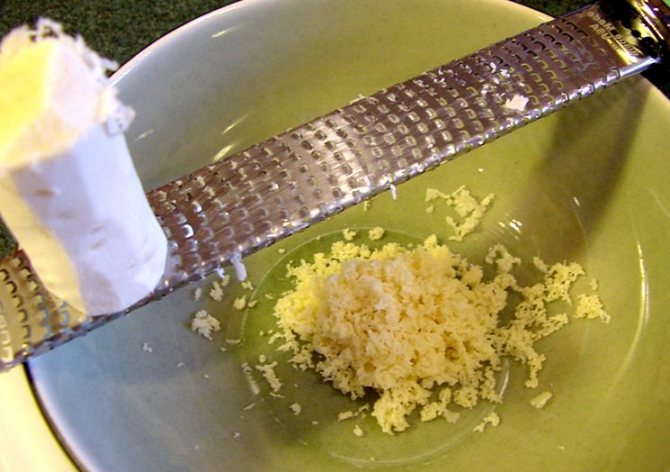

Peeled horseradish, garlic and better tomatoes are also crushed, seasoned to taste - better at the limit of taste, with salt. Mix the resulting vegetable mass thoroughly, arrange in small jars under a screw, previously washed, sterilized and dry, cover with a lid and store in a dark and cold place. Eat as a cold sauce or snack.
Harvesting horseradish root with tomato paste
Horseradish with tomato paste is prepared easier, faster than the classic preparation with fresh ripe tomatoes.Natural tomato paste 25% without starch is ideal for making homemade horseradish with cooking for the winter.
Structure:
- tomato paste - 400 g;
- shitty roots - 1 kg;
- bell pepper - 0.5 kg;
- hot hot pepper - 200 g;
- vegetable oil - 200 g;
- sugar - 1 glass;
- salt - 1 tbsp. l .;
- vinegar 9% - 100 g.
Cooking method:
- Peel the root and peppers, pass the vegetables through a meat grinder.
- Mix chopped vegetable gruel with tomato paste. Cook the mass for 10 minutes.
- Add the remaining ingredients and cook for a couple of minutes.
- We spread the seasoning on sterilized jars and roll up with metal lids.
Selection of fruits and storage of horseradish in the refrigerator
Horseradish is picked in late autumn. This must be done before severe frosts. Withering of the top of the plant, a kind of signal for its harvest. Two or three year olds are suitable for this. The roots for the first year of life will not give the expected taste and smell. The old ones will be rude and with an unpleasant bitterness. Dug out with a pitchfork so as not to damage the roots. The tops are not completely cut off, but 2 cm is left.
Advice! Horseradish is perfectly preserved in the ground in the garden. Dig in the spring before the first greens appear.
Select whole, undamaged, mature roots with a thickness of at least 20 mm. Do not leave them long after digging up. Proceed with the procurement immediately. In a city apartment, horseradish is stored in the refrigerator. This can be a freezer or a bottom shelf.
Horseradish root can be stored in the freezer
- Horseradish root in the freezer. Grate, wrap in airtight bags. You can simply cut into small pieces (up to 5 cm) and freeze. In this state, the spice will stay for 5 months. At the same time, the taste and useful properties will not be lost.
Attention! It is easier to grate frozen roots with a grater, you do not have to protect your eyes from caustic juice.
- In the lower compartment of the refrigerator. In principle, any shelf will do. The roots are washed, cleaned, dried for 48 hours. The prepared material is wrapped in cling film or a bag. Each root needs individual packaging. So the horseradish will last about three weeks.
Storing whole roots in the vegetable compartment of the refrigerator
In the absence of equipped storage, you can put horseradish in the refrigerator. In the vegetable compartment, the temperature and humidity conditions are suitable for storing small crops.
How to store horseradish in the refrigerator? There are two ways:
- Wash the roots thoroughly, dry on a paper towel. After drying, place the roots in a plastic bag and tie tightly. An airtight food container can be used. The freshness of the crop will last for 8-10 weeks.
- Wrap unwashed roots, one at a time, with cling film. Make some ventilation holes, put on the vegetable shelf. The shelf life is about 5 months.
When pulling out the seasoning for cooking, check for spoilage. At the end of the shelf life, use a spice for the blanks.
Do you know that…
When rubbing horseradish, the space is disinfected. Horseradish phytoncides, scattering around the room, kill the malicious pathogenic microflora, so it is better to prepare a fragrant seasoning during the period of the approach of acute respiratory infections.
How to store horseradish
Many people are looking forward to the fall season to harvest horseradish and stock up on it for the winter, and then make a delicious seasoning. But did you know that not all plants are suitable for this purpose. After all, it is best to dig up rhizomes, whose age is about 3 years, while their surface must certainly be light, even and white when cut. As for the storage itself, there are several ways. We will now tell you how to store horseradish root at home, and you yourself will choose the best one for yourself.
To keep the horseradish for a whole year, we select good roots, without damage, discard damaged specimens, cut the tops, put them in a box and fill them with sand so that they do not come into contact with each other. In this case, the bottom layer of sand should be about 7 centimeters. About once a week we moisten the sand with water so that it is slightly damp. This will keep the rhizomes fresh until next season, and you will have a fresh seasoning to the table all year round.
If you have nowhere to put the horseradish box, we suggest trying another way to store horseradish. We wash the dug roots and put them in a warm place to dry. After it dries out, take a mortar and crush it into powder.
The next method is as follows: first, rinse the roots in cold water, then clean and cut them into thin strips. After that, put them on a baking sheet and put them in the oven, heated to 60 degrees. After 40 minutes we take them out, cool, grind in a blender and transfer the dry mixture to a glass jar, covering with a lid on top. Just take into account the fact that before using the powder, we first soak in water and leave for about an hour. During this time, it will swell well, and you can fill the resulting gruel with vinegar or sour cream.
But this method is great for long-term storage of the root. So, we take the horseradish root, clean and rub it on a small grater. After that, we dilute it in vinegar so that the result is a liquid gruel. Next, we transfer it to a jar and seal it well.
How to store horseradish in the refrigerator?
Thanks to this method of storage, you will quickly prepare horseradish, only it will "live", unfortunately, no more than 3 weeks. So, we take young root roots, no more than 30 centimeters long, and clean them from the ground. After that, we put them in bags and put them in the refrigerator. If you put the horseradish root not in the refrigerator, but in the freezer, then it will stand for 5 months. However, in this case, it must be cut into pieces.
How to store twisted horseradish?
Using a meat grinder, grind horseradish and put it in jars. In this case, you can add beet juice to it, add salt, granulated sugar and pour in vinegar. We seal the jars and put them in the refrigerator for storage.
Horseradish, like many other vegetables, can be kept fresh using the cellar. To do this, we dig out the roots of this plant, carefully shake off the soil, then form small bunches of them and hang them.
How to store horseradish in the freezer?
Well, and the last way. We wash the horseradish, dry it, peel it, then put it in whole plastic bags and tie it in such a way that no air gets into them, very tightly. Now we put them in the freezer and take them out as needed. This method is convenient because if you suddenly want to use it, then we just rub it on a grater and add it to the desired dish.
Storing fresh horseradish
You can keep horseradish fresh both in the cellar and in the refrigerator.
How to store horseradish in a cellar
So, if you have a cellar at your disposal, then keeping horseradish in it fresh until the next harvest is quite simple. In addition, this method is the most economical and practical, since this culture tolerates quite well the neighborhood with other root crops, which saves not only time, but also space. First you need to prepare the room. Examine the cellar and clean it thoroughly. All unwanted inhabitants (insects and other pests) should be removed and mold and mildew removed. If there is high humidity in your cellar, then it is advisable to insulate the floor and walls.Heating devices and regular ventilation will not be superfluous in this situation.
On a note! These measures will protect the products in the cellar from rotting and disease!
After all the preparatory measures, you can lay the horseradish for storage. Place a few large wooden boxes in the room and put earth on the bottom. Next, we put the horseradish - the roots must be positioned so that they do not come into contact with each other. Sprinkle the first layer with wet sand and put another layer of food on it. Depending on the size of the wooden box, there may be several layers of horseradish in it at once.
Recommendation! If the horseradish crop was harvested not in the fall, but in the spring, the roots can germinate quickly. To prevent this, it is necessary to lay not wet sand between the layers, but slaked lime!
After the product has been placed in storage, it is left in the cellar and inspected from time to time. At the first signs of decay, the spoiled roots are thrown away, and the neighboring ones are treated with an antifungal drug. You also need to ensure that the vegetables do not dry out. To do this, wet sand is periodically added to the boxes.
In general, it is not difficult to save horseradish for the winter in this way, since it contains special substances that have bactericidal properties. These qualities make this root vegetable suitable for long-term storage and, under proper conditions, it will not lose its aroma and taste for a long time - up to one and a half years.
How to store horseradish in the refrigerator
If you don't have a cellar or basement, then you can store horseradish in the refrigerator, and this method is applicable for both autumn and spring harvests.
We sort out the collected products and clean them from the ground. Small roots are suitable for storage in the refrigerator - no more than 30 cm long. They must be wrapped with cling film and several holes made in it. This will ensure proper air circulation and the product will not "suffocate".
Packed spines must be placed in the lower compartment of the refrigerator. You can store them for no more than three weeks, using them as needed.
How to store grated horseradish
For long-term storage, horseradish can be grated on a fine grater. The resulting mass is diluted with vinegar until a homogeneous liquid mass is obtained. It is laid out in a glass jar with a tight lid.
See also:
You are wondering: how long can eggs be stored in the refrigerator? We will give you a comprehensive answer!
Mayonnaise manufacturers write completely different shelf life. Find out how much homemade mayonnaise lasts in the fridge
Do you all know about storing bananas? We recommend reading our article on the correct storage of bananas at home.
Many people like to eat radishes. It is tasty and healthy. Our article will tell you everything about storing radishes at home.
Many housewives often like to fry pancakes for breakfast. And we have a very interesting article on storing pancake dough.
Marinated meat? Read on how best to store kebabs before going out into the countryside!
It is possible to preserve the invaluable qualities of horseradish only if the grated product is stored under certain conditions.
Secrets of a delicious horseradish snack
In order for Russian adjika to turn out with an excellent aroma and characteristic taste, it is recommended to follow a few tips. Then the result of the "fiery" seasoning will please and less time will be needed for cooking.
Adjika, recipe for making delicious adjika
- The choice of basic raw materials must be taken seriously. The roots should be about 3 cm in diameter, no more than a quarter of a meter long. Small rhizomes do not have the "vigor" characteristic of a spicy vegetable, larger ones do not contain enough moisture. Damaged spotted roots will not work.
- Fresh rhizomes, as well as preparations for the sauce, are stored in the refrigerator for no more than 20 days.The whole raw material is wrapped with cling film, the crushed roots are folded into a hermetically sealed glass dish. When frozen, the shelf life of raw materials increases.
- The ripeness of the tomatoes does not matter for the "spark". Both green vegetables and juicy ripe tomatoes are used.
- With long-term storage, the vigorous taste of horseradish “disappears”. An increase in the amount of spicy and pungent components - pepper, horseradish, garlic - for preparations that are planned to be stored for a long period of time will help to avoid this.
- Russian adjika can be frozen in small portions. This will increase the shelf life. The sauce is thawed before serving.
- The strong taste of horseradish seasoning can be enhanced by adding a little honey or sour cream.
And in conclusion, if you like spicy dishes, then you can diversify them not only with horseradish dressings, you can also use mustard.
How to store horseradish at home
The process of storing any vegetables is preceded by harvesting. Horseradish is a perennial plant, so its roots are becoming harder and harder to process every year.
It is for this reason that it is recommended to harvest only biennial plants with the best palatability.
The collection of horseradish roots should be carried out no later than the beginning of November, since at a later date they become too brittle. If you are late, leave the root in the ground until spring, it will be perfectly preserved in winter.


Collecting roots
The excavated rhizomes are shaken off the remains of the earth and the leaves are cut off, after which the damaged, broken, uneven specimens, as well as roots with cracks and dark spots, are sorted out. The selected material is sent to dry in a warm place with good ventilation. In the future, the roots are stored both fresh and processed, the organization of which will be described below.
Conditions
We put the selected prepared roots in a box so that they do not come into contact with each other and cover them with sand. The bottom layer of sand should be at least seven centimeters. Spray a little water on the sand once a week. So you can save horseradish until the next harvest.
If there is nowhere to put the box, you can try another method. We put the washed roots in a warm place to dry. When it dries, it can be crushed into powder in a mortar.
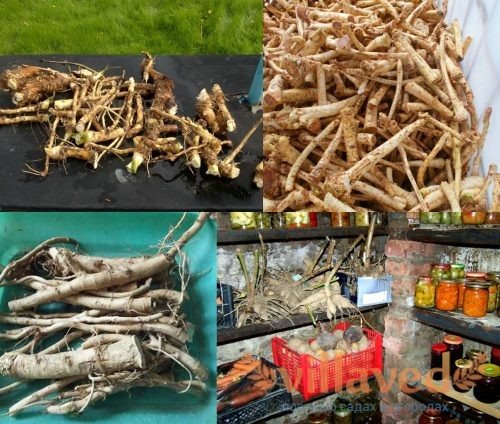

Placing roots in boxes in the basement
Another method is as follows: first, wash the roots with cold water, then peel and cut into thin strips. Next, put on a baking sheet and put in an oven preheated to 60 degrees. After 40 minutes we take it out, let it cool, grind it in a blender and put the finished mixture into a glass container. Before use, such a mixture must be soaked in water for an hour.
When and how to harvest, preparation for storage
Horseradish is a typical perennial that propagates by root cuttings. The vitality of this plant is amazing - adult specimens develop even from tiny pieces of root and they are not afraid of severe frosts. There are also cultural forms that are especially common in Europe.
Do you know that…
Gardeners note the rapid growth of adults, so they try to fence off the growing area with plastic or slate dug around the perimeter of the garden bed.
For harvesting horseradish for the winter, roots are used that are 2-3 years old. The young growth is not so pronounced characteristic taste, and the old rhizomes are too coarse.
They dig them up in the fall, before the first frost, focusing on the climatic conditions of their region. If you miss the necessary time, the roots will become brittle, which will affect the preservation.
It is permissible to harvest in spring, but this must be done before the flower stalks are laid. Otherwise, the plant wants to use the reserves for the formation of seeds, which will affect the nutritional and beneficial qualities.
Algorithm for harvesting and preparing for storage:
- Remove the hardwood and set aside for recycling.
- Use a shovel or pitchfork to dig in the bush at a distance.
- Gently remove the roots, peel off the soil, being careful not to damage the skin.
- Place the excavated roots to dry in a dry, warm room with good ventilation.
- Conduct culling, taking horseradish with a diameter of over 10 mm for storage. Make sure there are no damages, areas of decay, cut off the remains of the tops.
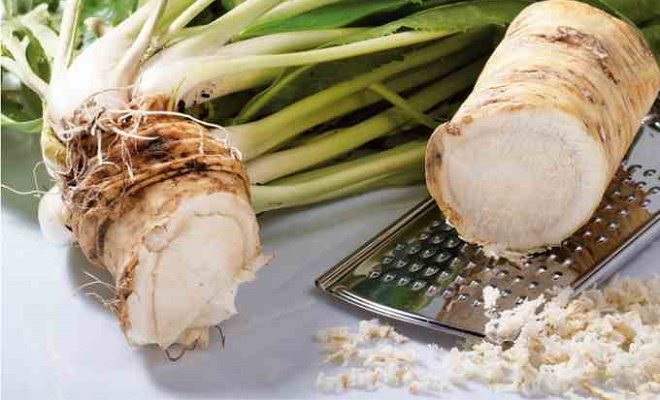

A quality product has a white cut, juicy fleshy structure
When buying from the market, follow the rules described above. Set aside damaged roots that are unsuitable for long-term storage for processing.
We also recommend reading:
Cleaning, harvesting and storage of parsley root Cabbage: how to harvest and store fresh. Preservation, drying, freezing How long to store cauliflower at home: cellar or refrigerator? How to properly store carrots in the cellar and apartment: a detailed guide
Conservation
The people know many ways to preserve horseradish rhizomes: with and without vinegar, with mayonnaise, carrots, apples, beets.
Here are some recipes to preserve and use horseradish in winter for making sauces and seasonings.
Horseradish root with vinegar (pickled)
There are many recipes for pickling horseradish, we recall some of them in this article.
Recipe number 1.
To prepare the blank you need to take:
- Root - 1.2 kg
- Nine percent table vinegar - 1 tablespoon
- Salt - 1 teaspoon
- Granulated sugar - 1 tablespoon
The root must be thoroughly washed, removed the upper skin (scraped off with a knife or peeler), then chopped in any way (you can use a blender or a meat grinder). When grinding, remember that the root gives off burning essential oils that can get into the eyes. For protection, it is recommended to cover the container for collecting the gruel with a plastic bag. Then, with horseradish gruel, fill two-thirds of a three-liter jar, pour boiling water (about 1.5 - 1.8 liters), add salt, sugar and vinegar. Close the jar with a lid and shake well to mix the contents. After the mixture has cooled, put in sterilized jars to the very top, cork and store in the refrigerator.
Recipe number 2.
- Root - 1.5 kg
- Salt - 2 tablespoons
- Granulated sugar - 4 tablespoons
- Spices: cinnamon (1 stick) and cloves (4 - 5 pieces)
- Table vinegar nine percent - 20 ml
Pour 0.5 liters of water into a saucepan, add salt, granulated sugar, spices. Then the solution is boiled for 15 minutes, removed from heat and vinegar is added. The filling is left to infuse for about 12 hours. Then the horseradish gruel is placed in jars, poured with a solution and sealed.
Recipe number 3.
- Root - 1 kg
- Boiled water - 2.5 cups
- Apple cider vinegar - 2.5 cups
- Salt - 2.5 teaspoon
- Granulated sugar - 2.5 teaspoon
- Walnut (ground) - 10 tablespoons.
Add all the ingredients to the horseradish root gruel, mix well, arrange in jars, close tightly. Keep refrigerated.
Horseradish root snacks for the winter
If you add various vegetables to horseradish, then you can get a variety of snack salads with a piquant taste and bright aroma, which can also be prepared for future use for the winter.
Recipe number 1.
- Horseradish root - 0.5 kg
- Bulgarian pepper - 0.5 kg
- Garlic -0.5 kg
- Tomatoes -1.5 kg
- Salt - 2.5 tablespoons
- Black bitter and allspice ground pepper
Horseradish roots and all vegetables are ground in a meat grinder or blender, salt and black pepper are added, the resulting mass is placed in a saucepan, put on fire and boiled for about 40 - 45 minutes. Then the snack is laid out in pre-sterilized jars, sealed tightly with lids and stored in the refrigerator until winter.
Recipe number 2.
- Horseradish root - 0.5 kg
- Mayonnaise - 1 kg
The root is ground in a meat grinder or grated. The resulting mass is thoroughly mixed with mayonnaise. The mixture is laid out in jars, sealed and used as a ready-made sauce. It is better to store horseradish blanks for the winter in a cool place.
Recipe number 3 (one of the most beloved and popular recipes).
- Root - 1 kg
- Beetroot (juice) - 300 grams
- Salt - 1 tablespoon
- Granulated sugar - 2 tablespoons
- Nine percent table vinegar - 10 tablespoons
- Boiled water - 300 grams
Grind the root in a meat grinder or in any other way. Add salt, sugar, vinegar to boiling water. Add the prepared marinade and beetroot juice to the horseradish gruel, mix everything well, put in jars, seal and store in a cool place. This sauce is perfect with any meat and fish dishes.
Recipe number 4.
- Horseradish root - 1 kg
- Carrots - 0.5 kg
- Apple - 0.5 kg
- Salt - 2 tablespoons
- Granulated sugar - 4 tablespoons
- Water - 1 liter
Horseradish root is crushed in a meat grinder. The apples are peeled, the core and seeds are removed, then grated. Peel and grate carrots. Then the carrots, apples and horseradish are mixed into a homogeneous mass. Salt and granulated sugar are added to the water. The solution is brought to a boil. The ready-made mixture of vegetables is laid out in pre-sterilized jars and poured with the resulting marinade. The jars are carefully sealed and stored as such in a cool place.
Pickled
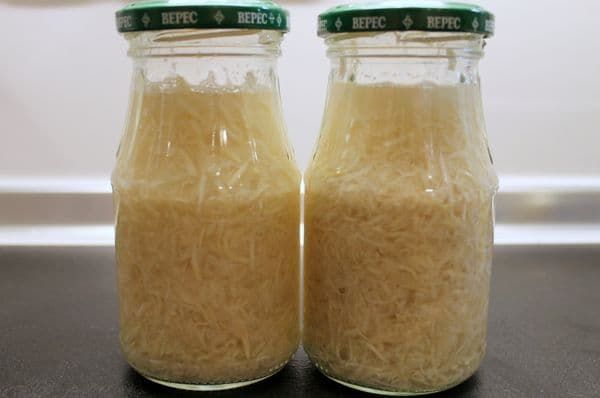

At home, horseradish can be pickled:
- Thoroughly washed roots (1 kg) are first soaked in cold water for 24 hours.
- After this period, they are cleaned and chopped using a grater, food processor or meat grinder.
- The crushed product is laid out in pre-sterilized jars and poured with boiling marinade prepared from 250 ml of water, 125 ml of vinegar (preferably apple cider), salt and sugar, taken in one tablespoon.
- Hermetically sealed jars can be stored for 2-3 years in a cool, dark place.
Freezing
As you can see, putting horseradish in the refrigerator is far from the best way to preserve it for the winter. If you do not have the opportunity to keep the roots in the cellar or on the balcony, the best solution at home would be to freeze this vegetable. Cut the peeled root vegetable into small pieces, dry it at room temperature, put on a baking sheet and put in the freezer. After a couple of hours, the workpiece is removed, packaged in sealed bags and put away for long-term storage. You can also freeze the grated root by turning it in a meat grinder and placing it in an airtight container.
The huge advantage of such storage is the minimum space, the availability of the product (at any time it can be taken out and thawed), as well as the loss of tear-breaking properties by horseradish. Those who have rubbed this product at least once in their life know that they cry even more from horseradish than from the "evil" onion itself. But the defrosted horseradish can be easily grated and not feel any discomfort. Moreover, all the rest of the product is preserved, and the sauces made from defrosted horseradish are in no way inferior in their sharpness to dishes made from fresh roots. You can store the rhizomes in the freezer for a very long time - up to a year.
Saving roots in the refrigerator
The plant must be peeled from the ground with a knife, wrapped in cling film and sent to the refrigerator. In this form, he can lie no more than three weeks. If you want to extend the shelf life of the plant, then you can place it in the freezer. The fact is that horseradish does not lose its nutritional properties even at low temperatures. And to make it more convenient to use it, you can cut it into pieces in advance, put it in bags. The advantage of storing the root in the freezer is that later the plant can be taken out and grated without any problems, and you will not shed a single tear.You now know how to save horseradish for the winter using a refrigerator, but this is not the best way to save. Let's move on to the next method.
The simplest method for cleaning horseradish
Even small roots are cleaned efficiently and in minimal time when processing from a mini car wash.
From this device, water comes under high pressure, as a result of which the thin skin flies off along with the dirt. Pour the roots into the net to prevent them from scattering during cleaning.
How to store shit, shit?
Horseradish (or horseradish) is a horseradish-based spicy snack. The classic recipe for the sauce involves the addition of garlic, tomatoes and salt.
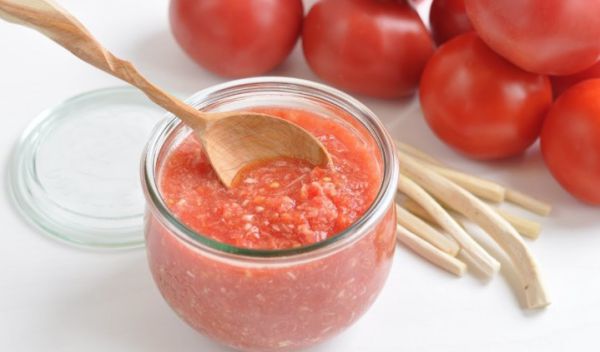

Hrenoder (fire, shit)
How hrenoder is stored:
- In a refrigerator. Sterilized sauce - 2-3 years, fresh - six months.
- In a dark, cool room (cellar, basement). The required temperature is not higher than 5 degrees Celsius.
- In the freezer. It is recommended to pour the sauce into tins for freezing ice.
In the freezer
In order for horseradish roots not to lose their aromatic and taste qualities during the year, you can send them to the freezer.
How to store:
- The washed and peeled roots are cut into small pieces and, to remove excess moisture, lightly dried on a cotton towel.
- The dried slices are laid out in a thin layer on a tray or kitchen board and placed in the freezer.
- The frozen pieces are poured into a plastic bag: this way they will take up less space in it. As needed, they can be taken out of the freezer and, without defrosting, grated.
The healing qualities of horseradish
Horseradish is a very strong phytoncide.
The culture can grow in one place for many years, has a sharp, rich aroma. Both the leaves and the roots of the plant have many beneficial qualities.
Horseradish has the following beneficial properties:
- It has a diuretic effect. The roots are used in the treatment of kidney stones, cystitis.
- Stimulates digestion, improves appetite, is useful for gastritis with low stomach acidity.
- It has an antibacterial effect and is an effective expectorant. It is used for the prevention and treatment of colds, sore throats.
- Stimulates blood flow to the skin surface, compress from the root is used for rheumatism, treatment of muscle pain.
Horseradish with carrots
An unusual recipe for a spicy snack with carrots. On its basis, it is easy to prepare a winter vitamin salad, or by adding fresh spicy ingredients to make a burning seasoning that warms in winter.
You will need:
- horseradish roots - 150 g;
- carrots - 150 g;
- apple cider (or grape) vinegar - 4 tablespoons;
- sweet paprika - 1 tsp;
- water - 150 ml;
- granulated sugar - 1 tsp;
- kitchen salt - 1 tbsp.
How to prepare horseradish for the winter with vinegar:
- At the initial stage, we clean the root and carrots.
- We rub horseradish on a grater with an average size of holes. Three carrots on the smallest grater.
- Mix the root and carrot in a bowl. Pour in boiling water and cover the vegetables with a lid.
- After 3 minutes, add the rest of the ingredients.
- Mix well and let cool completely.
- We transfer to clean glass jars, tightly seal with lids.
- We send the blanks to the refrigerator.
After 12 hours, the shitty snack will be ready, but you can leave it for the winter.


Horseradish canning
You can also prepare horseradish root for future use by canning. So that the seasoning prepared on the basis of horseradish root does not ferment, the jars for the blanks must be pre-sterilized, and the blanks themselves must be stored in a dark and cool place.
- classic canning involves grinding horseradish with the addition of salt, sugar and table vinegar to taste, after which cans well-filled with horseradish are sterilized in a water bath for five minutes and then sealed with tin lids;
- the preparation of horseradish consists in grinding a kilogram of tomatoes with a meat grinder with the addition of 300 g of grated horseradish and 100 g of garlic. Salt, sugar and vinegar should be added to the resulting vegetable mixture, and then the jars with the blank should be closed with plastic lids;
- grated horseradish with beets is no less popular, for the preparation of which 500 g of grated root should be poured with boiling water and covered with a lid. After cooling, drain the water, and add a tablespoon of salt, a tablespoon of sugar, half a glass of 6% vinegar and 300 g of boiled grated beets to the resulting horseradish gruel.
Methods for preserving horseradish-based seasonings
Such a spicy additive will delight any man, so women just need to save horseradish for the winter. Recipes for making seasonings based on this plant are familiar to many, but not everyone knows exactly how to make them correctly.
Method 1. Wash fresh peeled root in the amount of 0.5 kg and soak in water for a day, and then grate it on a fine grater or use a meat grinder. Boil water (400 ml) and add 1 tablespoon of sugar and salt to it, and then stir to dissolve the ingredients. Remove the pan from heat, add 200 ml of vinegar and grated horseradish to the container. Mix the entire composition thoroughly, distribute in prepared jars and roll up the resulting seasoning.
Method 2. Prepare the marinade, and for this take beet juice in an amount of 500 ml, vinegar - 30 g, sugar - 80 g, salt - 1 tablespoon, cloves and cinnamon 0.5 g each, Bring the beetroot drink to a boil, add spices , stir the mixture and remove from heat. When the marinade has cooled, pour the vinegar into it, and then place the liquid in the refrigerator for a day. As in the first method, peel the horseradish, wash and grate. Add it to the finished sauce and mix the resulting composition. Spread the mixture into prepared sterilized jars and roll them up with a key. And now you have already got ready-made horseradish for the winter. Seasoning recipes, as you can see, are simple, and every housewife can make them.
Storage methods and locations
There are several ways to save horseradish for the winter. But in order for it to lie well, several conditions are fulfilled: they choose a suitable container and temperature regime. The shelf life of the product is observed.
Owners of their own homes store horseradish in the cellar or basement. The apartment uses a dark cool pantry or refrigerator. Depending on the storage location, the method of processing the root crop is chosen.
What temperature does the heat-resistant glue withstand? The power of a horseshoe: how to hang it over the door in the house?
Basement or cellar
In order for the roots to "survive" the winter well and not lose their spice and taste, you need to follow several rules:
- Horseradish is dried, cleaned of the remnants of the earth, laid out in wooden boxes in one layer so that there is a distance between the roots. Fall asleep with sand a few centimeters. The sand is periodically sprayed with water. Thanks to this, the root vegetable will retain its taste and aroma.
- Storing horseradish at home for the winter is possible in plastic bags. To do this, the roots are washed in water, dried thoroughly, folded into plastic bags or bags and filled with air so that the container becomes airtight. With this storage method, the roots can lie from 3 to 6 months.
- Root crops will stay fresh for a long time with the help of peat bedding. For this, the prepared horseradish is put in boxes and covered with peat. It prevents the roots from rotting, as it has an antibacterial effect.
Before harvesting in the basement or cellar, they are cleaned and ventilated. The premises are inspected for the presence of parasites and pests and, if necessary, disinfestation is carried out.
Refrigerator and freezer
To keep stocks of horseradish in the apartment, they use a refrigerator. For this:
- The roots are thoroughly washed and dried, wrapped in cling film or thick paper, make several holes for air circulation and put them on the bottom shelf of the refrigerator. In this way, the harvest will last from 4 to 5 weeks.
- For longer storage, choose an airtight container. Then the shelf life of the workpiece will increase to 3 months.
This method of stockpiling is chosen with a small harvest, because containers take up a lot of space on the shelves of the refrigerator.
A great way to save horseradish for the winter is to freeze it. The roots are washed and dried, cut into circles or cubes. Fold in a convenient container or bag and put it in the freezer. Thus, the root crop can be stored for about a year.
If you freeze horseradish twisted through a meat grinder, you get an excellent spice for meat dishes, as well as soups and sauces.
Fresh
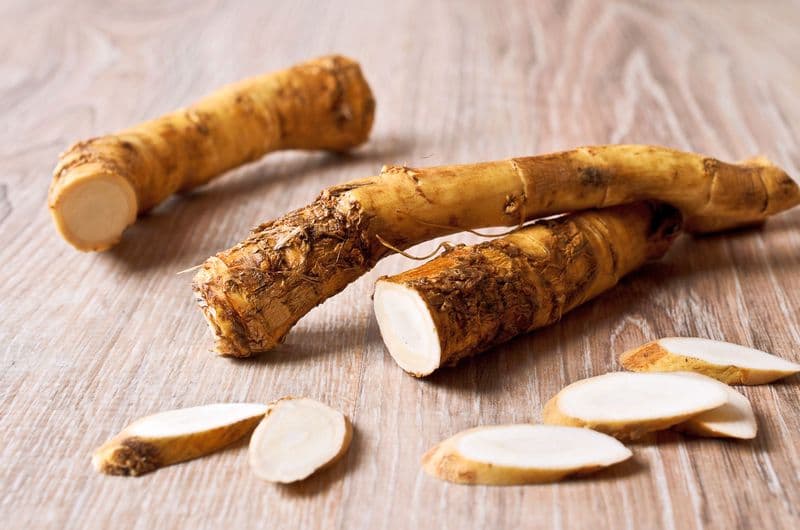

To keep the horseradish fruit fresh:
- The owners of private houses can keep them in storerooms, cellars or basements using wooden containers filled with river sand or peat.
- Owners of city apartments can place them in the refrigerator, on a glazed balcony or in a cool dark closet.
In both cases, the premises in which the root crops are stored must have good ventilation.
Harvesting horseradish for the winter
You can make a delicious horseradish seasoning that your loved ones will enjoy at home. Since this burning root ripens in the fall, and you want to use it in home cooking all year round, you need to take care of its preparation for the winter. A home-made seasoning loses its pungency with prolonged use, therefore, as a rule, one serving is prepared for 2 to 3 weeks, and then the next one is made.
There are several ways to save horseradish rhizomes for processing in winter:
- fresh preservation;
- freezing;
- drying;
- conservation.
Keeping fresh
After the roots of horseradish are dug up, they are cleaned of dirt, dried and sorted. Thick, long, undamaged roots are left for storage. The wooden box (or box) is filled with clean dry sand, the horseradish roots are placed in the box in rows sprinkled with sand, so that they do not touch. The box should be stored at a temperature of about zero degrees (you can in the cellar, on the loggia or balcony).
Freezing
The roots selected for winter storage are washed with cold water, the skin is scraped off with a knife. Then the rhizomes are cut into pieces of about 5 centimeters, placed in containers or small bags for freezing (one bag - one portion of the product for making sauce or seasoning) and sent to the freezer.
It is believed that seasonings made from frozen rhizomes have a more pronounced burning taste.
Drying
Horseradish rhizomes are washed, peeled, cut into small pieces and dried in an oven or in a special dryer for vegetables. This process should be quick, since all essential oils will quickly evaporate from the cut product. Horseradish leaves can also be dried.
The dried pieces and leaves can be folded into cotton bags or grinded and stored in a glass jar with a tight lid to preserve the aroma.
Dried horseradish is not suitable for making sauces or seasonings. It is convenient to add it to marinades, pickles, various culinary dishes all winter long.
Dry
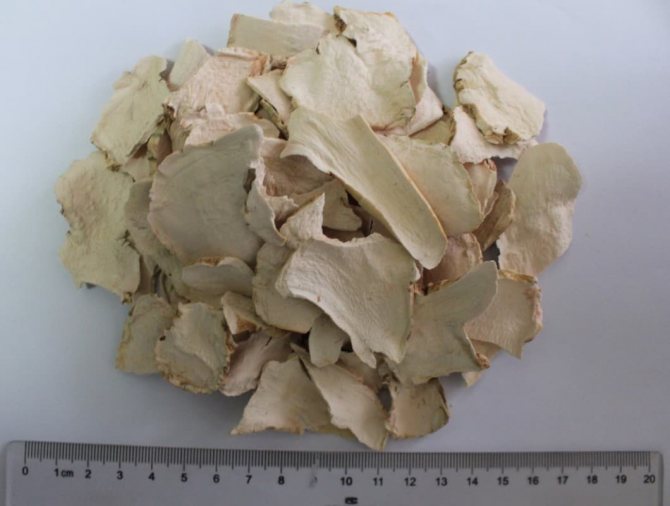

Dried horseradish roots can retain their beneficial properties for two years. They are used for making sauces, first courses (borscht and vegetable soups), pickles and hot spices. For drying, you can even use those roots that have been found unsuitable for long-term fresh storage.
Horseradish can be dried both in the sun and when exposed to high temperatures: using a gas oven or an electric dryer.
The most popular are the following methods:
- Having cut the washed roots into halves (along the length), lay them out on a protrusion and dry them as described above. Glass jars are suitable for storage. To make the roots usable, you need to hold them a little in warm water.
- After rubbing the peeled roots on a medium grater, transfer them to a sheet (the layer must be made thin) and, opening the door, dry them in the oven. The finished flakes are placed in a glass container and placed in a dark, dry corner.
And the last third way:
The washed roots are cut into thin slices and, putting them in one layer on a baking sheet lined with parchment paper, are placed in an oven heated to 60 degrees for an hour and a half.
To prevent the roots from burning, experienced housewives set a minimum flame in it and keep the door ajar. The readiness of the roots is determined by touch: the finished product must acquire hardness.
The dried horseradish is pulverized using a food processor, coffee grinder, or regular mortar and pestle. The crushed product is poured into a plastic, porcelain or glass container with a ground-in lid.
Dried product storage
Before sending horseradish for storage, it is allowed to dry it. Moreover, such roots are no less convenient for further use - they can be added to various sauces and seasonings, put in first courses and meat snacks.
On a note! You can dry those roots that you previously discarded for storage in the cellar!
Selected root crops are first cleaned of soil, then the tops are removed and small shoots are cut off. After horseradish, rinse very quickly under cold water and remove the thin skin. At this stage, speed is important, since if the roots are in water for a long time, they will saturate moisture and will be unsuitable for further storage. Wipe the prepared product with a paper towel and lay it out in one layer in the fresh air. Just make sure that no direct sunlight falls on the roots. Otherwise, the phytoncides contained in horseradish will evaporate, and most of the glycosides will break down and the roots will lose a significant proportion of nutrients and their characteristic taste.
Then the horseradish is dried. This can be done in several ways.
- We cut each root crop into two equal parts longitudinally and spread it on a baking sheet. We place the product in an oven preheated to 60 ° C and leave for an hour and a half. In this case, the door must be ajar. This procedure will take about an hour and a half. Place the dried roots in small glass containers and use them as needed.
On a note! Before use, horseradish prepared in this way is soaked for a while in warm water! - Cut the prepared roots into thin slices and lay them in one layer on a baking sheet. Dry in the oven according to the above described scheme. Then we put the finished product in a blender bowl and grind it into powder. You can store such horseradish in glass jars in a dry, dark place.
- Rub the peeled and washed root vegetables on a grater and spread the resulting gruel in a thin layer on a baking sheet. We leave in a preheated oven with the door ajar until completely dry. Store in glass under the lid.
Shabby


The freezer is the best place to store mashed horseradish, which is a ready-to-eat product.
You can grind horseradish root using a grater, meat grinder or food processor. In order to facilitate the process of crushing the roots, you can hold them in cold water for an hour.
Since rubbing horseradish produces volatile substances that irritate the mucous membranes of the eyes and nasal cavity, you must protect them by wearing a mask and glasses.
If a meat grinder is used to grind horseradish, a bag made of dense polyethylene is put on its outlet, into which the ground product will enter.
The ends of the bag are tied around the hole or securely fixed with an elastic band. The resulting gruel is laid out in small bags and, tightly wrapped, put them in the freezer. The shelf life of grated horseradish is 12 months.
Experienced housewives, having decomposed the semi-liquid gruel in ice molds, freeze it in the form of portioned cubes. The finished cubes can be used to make soups, sauces and salads.
Freezing garden crops
Freezing is an excellent way to store vegetables and herbs for as long as possible. All mineral complexes and vitamins are perfectly preserved in such simple blanks.
For freezing, the horseradish root must undergo a special treatment, including repeated washing under running water to remove soil residues, thoroughly peeling and drying with a cloth or paper towel. Then the horseradish should be cut into convenient pieces, put into bags and stored in the freezer. It should be noted that rubbing frozen horseradish is very convenient, as it does not sting the eyes.
Along with other popular vegetable and spicy garden crops, drying horseradish roots is a fairly common way of harvesting a garden crop for the winter.
Dried vegetables and herbs are perfectly stored at home, preserving the taste and aroma. Currently, harvesting not only dry roots, but also horseradish leaves is very popular:
- select healthy fresh horseradish leaves without visible damage, which need to be washed well and the petiole removed. The washed leaves must be dried a little at room temperature, then cut and evenly distributed on a baking sheet, which you want to cover with parchment paper. Drying is carried out in an oven at a temperature of 40-45 ° C for a couple of hours;
- clean the horseradish roots from soil residues, then rinse well in running water and peel. The peeled roots should be grated on a coarse grater and dried in the oven at 40-45 ° C. The dried roots can be ground in a coffee grinder.
Dried horseradish leaves and roots should be stored in glass jars with tightly closed lids in a dry, dark and cool place. It should be noted that adding a tablespoon of dried horseradish to the pickle with cucumbers will relieve it from cloudiness and mold.
Methods for freezing horseradish root
Before placing the product for storage in the freezer, it must be thoroughly washed and cleaned with a knife. To better wash off the dirt, the rhizome can be soaked for a couple of hours in a large container of water.
Large rhizomes can be conveniently cleaned with a vegetable peeler, while small and thin rhizomes are scraped off the dirt with the edge of a knife. Cleaning the rhizomes is a long and not very pleasant matter.
To exclude the contact of horseradish with air as much as possible, the peeled roots should be put in a container with cool water. This will keep the aromatic substances of the plant intact.
After all the horseradish is cleaned, you need to blot it with towels from excess moisture. Now you can start freezing!
Horseradish slices
The cleaned rhizomes are cut into small pieces, 2 - 3 centimeters long. The blank is put into freezer bags or small containers. Tightly packed containers are sent to the freezer for storage. If necessary, horseradish can be taken out and chopped in a meat grinder or in a blender, without defrosting, and used as directed.
Watch the video from the channel "Know and be able" - How to save horseradish for the winter. Freezer to help you!
Grated horseradish
Horseradish can be chopped before placing in the freezer. To do this, use: a hand grater, a meat grinder or a blender.
The manual method of processing horseradish is very laborious. At the same time, aromatic vapors corrode the eyes and prevent them from breathing freely.Therefore, it is better to use a manual or electric meat grinder or blender to grind horseradish.
If you are using an electric grinder, put a plastic bag over the outlet to minimize the release of essential oils that cause burning and tearing of the eyes.
The safest way to chop horseradish is to chop it with a blender or food processor. Since the rhizome is very hard and dense, the power of the unit must be at least 600 - 700 watts.
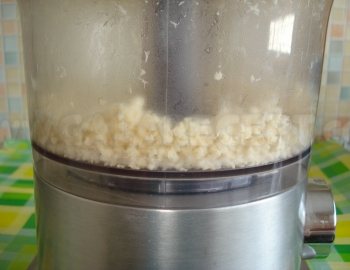

The Brovchenko family in their video will tell you how to clean and rub horseradish. A painless and tearless way.
Horseradish with apple and lemon juice
An excellent option for freezing horseradish immediately in the form of a sauce or snack. For example, you can freeze chopped horseradish root with a grated apple. For this, the products are taken in equal proportions and mixed with 1 teaspoon of lemon juice. Such a blank can be frozen in ice cube trays or in a bag, spreading it out in a thin layer.
After preliminary freezing, horseradish cubes are removed from the molds and transferred to packaging bags or containers.
Horseradish with honey
Seasoning sauce with honey contains only natural products. Honey and fresh cranberries or frozen berries in a horseradish appetizer sauce are deliciously combined with jellied meat and homemade sausage. Homemade preparations with natural preservatives (horseradish, cranberries and honey) are perfectly stored throughout the winter until the next harvest.
- root - 150 grams;
- natural honey - 2 tablespoons;
- cranberries - 150 grams.
Preparation:
- Cut the processed white roots into pieces for easy chopping.
- We wash the berries and let them dry. Fully defrost the frozen ones.
- Put the roots, berries and honey into the blender bowl.
- Grind all components to an almost uniform consistency (as much as possible).
- We put the finished sauce in a sterile jar and close it with a hermetically sterilized lid.
We store the seasoning in the refrigerator, use it as a sauce for meat aspic, baked fish, stuffed with seafood. If the dish tastes very sweet, you can acidify it with lemon.
Canned horseradish with citric acid
Delicious winter horseradish preparations - horseradish for the winter with citric acid.
Ingredients:
- roots;
Horseradish Marinade:
- water - 1 liter;
- citric acid - 20 grams;
- salt - 30 grams;
- sugar - 20 grams.
Recipe:
- We wash strong roots well.
- Cut off the peel and chop the horseradish on a grater or in a meat grinder.
- To prepare the marinade, dissolve the sugar and salt in boiling water.
- Remove the cooked marinade from heat, add citric acid.
- Mix citric acid with horseradish, fill a hot jar with a horseradish snack.
- Roll up the shitty blank with a metal lid.
The benefits of horseradish
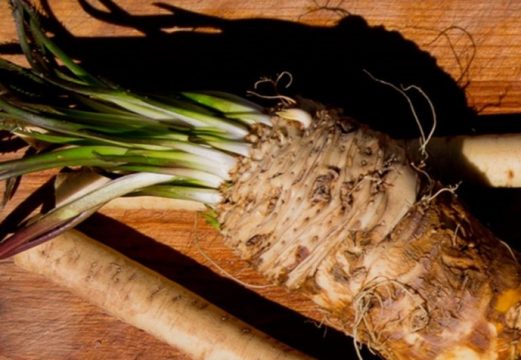

Horseradish is also a valuable food product, as a savory condiment, containing many nutrients that a person needs. First of all, the root vegetable is a powerful source of vitamin C, superior in this quality to citrus fruits. Horseradish root contains a large amount of ascorbic acid, vitamins B1, B2, PP and mineral elements - potassium, calcium, sulfur, iron, phosphorus. Horseradish is also valuable for its high concentration of phytoncides, fiber, useful essential oils and resinous substances.
Due to its unique composition, the product has antimicrobial properties and a diuretic effect, improves appetite and increases the acidity of gastric juice, strengthens the immune system, lowers the concentration of cholesterol in the blood, helps to normalize blood pressure, and prevents oncology. The most useful seasoning is made from fresh roots.
How to dry horseradish
Chopped into thin slices and dried horseradish root can be stored for up to two years. You can also grind it with a blender and then dry it. In a crushed form, dry horseradish is stored for up to 12 months.
- The washed and dried root is finely chopped and sent to the oven.
- At + 60 ° C, it should be there until it dries completely.
- Leave the oven door ajar.
We recommend: Shelf life and storage conditions of bee pollen (in combs, granules, ground)
You can also dry horseradish outdoors in partial shade and in a drying cabinet. Do not put the cut roots in the sun. They will lose some of their volatile phytoncides, and some substances, such as glycosides, will simply be destroyed.
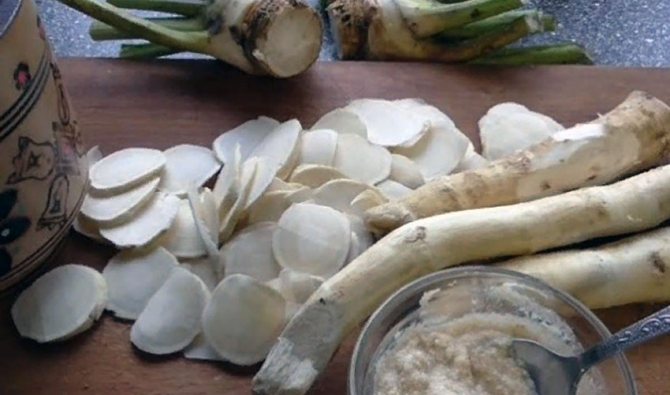

If you grind dried horseradish plates with a mortar, you can get a fragrant powder, which is then simply added to various dishes. Keep the pieces or crushed dry root in a glass container with a tight-fitting lid so that it does not "run out". It is enough to hold the dried plates in warm water for a few minutes to make them soft.
Freezer storage
Horseradish also retains its qualities in the freezer. According to housewives, after freezing, the smell of horseradish even intensifies.
We recommend: Dry or freeze currant leaves for the winter
For freezing, the roots are cut into pieces of 2–3 cm, the pieces are poured into freezer containers and placed in the freezer. When horseradish is needed, it is crushed without defrosting.
1
Storage preparation
An important point in order to ensure long-term storage of horseradish is preparatory work and harvesting. It should be borne in mind that not all plants are suitable for these purposes. The best are root vegetables about 3 years old. The surface should be flat, light in color, and white in the cut.
Harvesting is necessary in the middle of autumn. If horseradish harvesting is carried out in November, then this must be done carefully, as the roots become rather brittle. The main sign that you can dig up a vegetable is leaves that are completely dry and lying on the ground. In order to dig horseradish, you can use a special "Kolesov's sword" or a pitchfork if the ground is rather soft.
Kolesov's sword
Only large specimens should be dug, and small ones should be left until next year, wrapped up from frost and covered with a large layer of straw. Rhizomes must be carefully removed without breaking off the leaves, shaken off excess soil. Horseradish does not need to be rinsed, as this will extend its shelf life.
After collection, you need to cut off the leaves, leaving a stem 2 cm long, and then treat the cut with iodine. Vegetables should be carefully inspected for damage and left to dry for a day in a warm and well-ventilated place. If the roots are damaged or rotten, then they must be used immediately. Such vegetables cannot be sent for long-term storage.
Horseradish mining is not an easy job
You need to dig up the roots in late autumn, then the peel will be stronger. A dry sunny day is good for picking vegetables. Digging up the roots will require a reliable shovel and masculine strength. It is not so easy to remove horseradish from the ground, its processes deepen to half a meter. To obtain intact roots, you need to start digging around the circumference. As a result, after a few minutes of manual labor, the result will be obtained.
Usually one bush has several roots, among which you need to choose fresher and more even ones. After the end of the excavation work, the vegetables need to be dried in a shaded place, but not for long, otherwise they will wither. At the same time, the tops of the plants should be removed; in the fall they acquire a brownish tint and are not suitable for storage.
If you want to stock up on horseradish leaves, then you should harvest them without waiting for yellowing. It is better to perform the procedure for collecting greens in July, then it will be tender and juicy.
Now decide how you want to keep fresh horseradish for the winter or for a few weeks. The choice of the procurement method will depend on this. It is advisable to use several options in order to feel the difference in tastes and choose the one that you like best.

